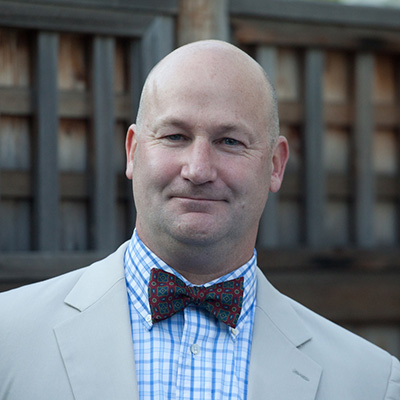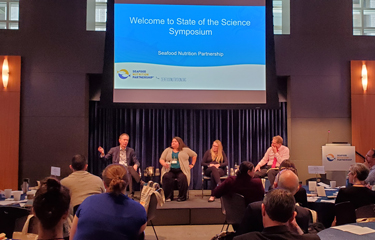The Seafood Nutrition Partnership held its third annual State of the Science Symposium on Tuesday, 17 September in Washington D.C., with attendees gathering to brainstorm ways to increase seafood consumption in the United States.
The symposium is held to coincide with National Seafood Month and provide the latest information on seafood nutrition science. The event’s program focused on the updated U.S. Departments of Agriculture (USDA) and Health and Human Services (HHS) Dietary Guidelines for 2020 – 2025, which is crafted through guidance from the 2020 Dietary Guidelines Advisory Committee. For the first time, the USDA and HHS identified topics and scientific questions to be examined committee prior its establishment. The departments added this step to promote a deliberate and transparent process, to respond to feedback on the Dietary Guidelines development process, and to identify expertise needs for the committee.
Three questions related to seafood asked by the USDA and HHS to help inform its committee include:
- What is the relationship between seafood consumption during pregnancy and lactation and neurocognitive development of the infant?
- What is the relationship between seafood consumption during childhood and adolescence (up to 18 years of age) and neurocognitive development?
- What is the relationship between seafood consumption during childhood and adolescence (up to 18 years of age) and cardiovascular disease?
Scientifically-proven links exist between seafood consumption and cognitive and neurocognitive development – especially in infants, according to several participants in a panel at the SNP event. The relationship between seafood consumption, neurocognitive development and pre-term birth was explored by Seafood Nutrition Advisory Committee Chair Tom Brenna, a professor of pediatrics and chemistry at the University of Texas at Austin; Joseph R. Hibbeln, the acting chief of the National Institutes of Health’s National Institute on Alcohol Abuse and Alcoholism; and Susan Carlson, a professor of nutrition at the University of Kansas Medical Center. Hibbeln and Carlson covered a number of scientific studies focused on the benefits of seafood consumption during pregnancy, how the benefits of seafood consumption compare to the impacts of potential mercury consumption, and the impacts of DHA consumption by pregnant women of cognitive development.
Also at the symposium, a group of experts announced the imminent publication of a comprehensive review of available scientific literature studying the relationship between seafood consumption and brain development. This group, composed of 13 scientists, each of whom studies seafood and omega-3s, has worked together in the field for several decades and are supporters of seafood nutrition by the nature of their professions, according to SNP President Linda Cornish.
“They wanted to take a look at existing research on seafood consumption from a balanced standpoint to see what the evidence was to answer the questions posed by the USDA,” Cornish told SeafoodSource. “Together, they reviewed around 2,000 studies related to seafood consumption, and after cutting through the noise, they found 40 studies directly addressing the question of seafood consumption and neurocognitive development. What they found was all the studies except for one – which had null findings, meaning there was no effect found – pointed to overwhelmingly positive evidence that pregnant moms who eat seafood help support the brain development of their babies. In fact, they found that moms who ate seafood during pregnancy increased their children’s IQ points by an average of 7.5 points.”
Cornish said the members of this group, known as the Technical Experts Committee, has “devoted their professional careers to studying seafood and omega-3s” and their goal is to use their collective knowledge to help inform Americans of the value seafood provides to their health.
“Their understanding of the benefits for moms and their babies when moms consume seafood gives them a desire to see that scientific evidence made more widely available to the average American public, and hopefully considered in the larger body of evidence on the subject as the dietary guidelines are being formulated,” Cornish said.
Part of that goal is an effort to reduce the public’s concern regarding mercury and seafood, Cornish said. That includes addressing federal warnings on the potential presence of mercury in seafood, including possible references to mercury in the federal dietary guidelines.
“This group of scientists would like to convey the scientific understanding of the benefits of eating seafood. When people talk about mercury in relations to seafood, there usually isn’t a way to discuss the relative risks versus relative benefits. What they’re trying to convey is that the consumption of seafood provides a great range of benefits for mothers and their children, and that the risks of mercury when consuming any and all seafood commercially available in the U.S. is relatively low,” she said.
While the USDA Dietary Guidelines are looked at as an important indicator to the American public on the safety and health of seafood, their actual impact on U.S. seafood consumption is questionable.
The 2015-2020 USDA/HHS Dietary Guidelines for Americans recommend at least two servings of seafood per week and at least 250 milligrams of omega-3s EPA and DHA per day to support heart and brain health as part of a healthy diet. Yet only 10 percent of Americans eat seafood twice a week and on average Americans take in 80 milligrams of omega-3s EPA and DHA per day.
With only 10 percent of Americans eating the recommended amount of seafood per week, the symposium stepped back from the science to look at production and consumption challenges, with the goal of increasing the number of Americans eating seafood twice a week. Scott Nichols, the founder and principal of Food’s Future; Alaska Seafood Marketing Institute Technical Director of Nutrition Initiatives Michael Kohan; NOAA Fisheries and Aquaculture Senior Advisor for Seafood Strategy Michael Rubino; and The Nature Conservancy Aquaculture Strategy Specialist Tiffany Waters, served on a panel looking at ways to increase the U.S. production of sustainable seafood. Increasing production in the U.S. was one strategy mulled by the panel, and product innovation tied into a domestic brand, such as shrimp grown in aquaculture facilities in the United States, was another. Using well-known species like Alaska salmon to create new seafood consumers was also discussed as a strategy for increasing U.S. seafood consumption.
Whether the impetus comes from federal nutritional guidelines or other origins, the consensus of a separate panel was that increasing consumption among America’s youth represents a vital component in developing lifelong seafood consumers, This challenge was addressed by Nielson Vice President of Global Responsibility and Sustainability Julia Wilson; Seafood Nutrition Partnership Communications Director Andrea Albersheim; and Stefanie Dove, the coordinator of the Marketing and Community Outreach Division of School Nutrition Services for Loudoun County (Virginia) Public Schools.
Videos of all of the presentations from the symposium are now available at the Seafood Nutrition Partnership website. More information on the topics discussed at the symposium will be available via a SeafoodSource webinar on 30 September, titled “Seafood and Human Health: The Science Behind Increasing Consumption Sustainably,” with SNP Communications Manager Valerie Agyeman and NOAA Fisheries Office of Aquaculture Science Advisor Mike Rust.
Also at the event, for the first time, the Seafood Nutrition Partnership recognized individuals who “inspire a healthier America with exceptional outreach and impact in raising awareness about the essential nutritional benefits of eating seafood.” Those honored this year include Laurel Bryant, the chief of NOAA Fisheries’ External Affairs Division, and Indiana-based television show host and dietitian Annessa Chumbley. SNP also honored three of its board members for their work in promoting seafood consumption -- Jack Kilgore, retired president of Rich Products; President and CEO Judson Reis, who served as the founding SNP chairman; and former National Basketball Association professional Detlef Schrempf, who the SNP said has utilized his celebrity platform to support SNP’s mission since the founding.
SNP will be showing special appreciation and recognition for the Chairman’s Circle supporters of the Phase 1 Campaign for helping to move the needle on seafood consumption for better health: DSM, Trident Seafoods, Gorton’s, High Liner Foods, Mazzetta, National Fisheries Institute, American Seafoods Group, Bumble Bee, Rich Products, MOWI, Long John Silver’s, Glacier Fish Company, Fortune Fish and Gourmet, King and Prince Seafood, CenSea, Harbor Seafood, and Eastern Fish Company.
These individuals and organizations that have supported SNP’s nutritional information campaign, including DSM, Trident Seafoods, Gorton’s, High Liner Foods, Mazzetta, National Fisheries Institute, American Seafoods Group, Bumble Bee, Rich Products, MOWI, Long John Silver’s, Glacier Fish Company, Fortune Fish and Gourmet, King and Prince Seafood, CenSea, Harbor Seafood, and Eastern Fish Company, were acknowledged formally at the Seafood Nutrition Partnership Honors Gala on 16 September, 2019.
Photo courtesy of Seafood Nutrition Partnership







